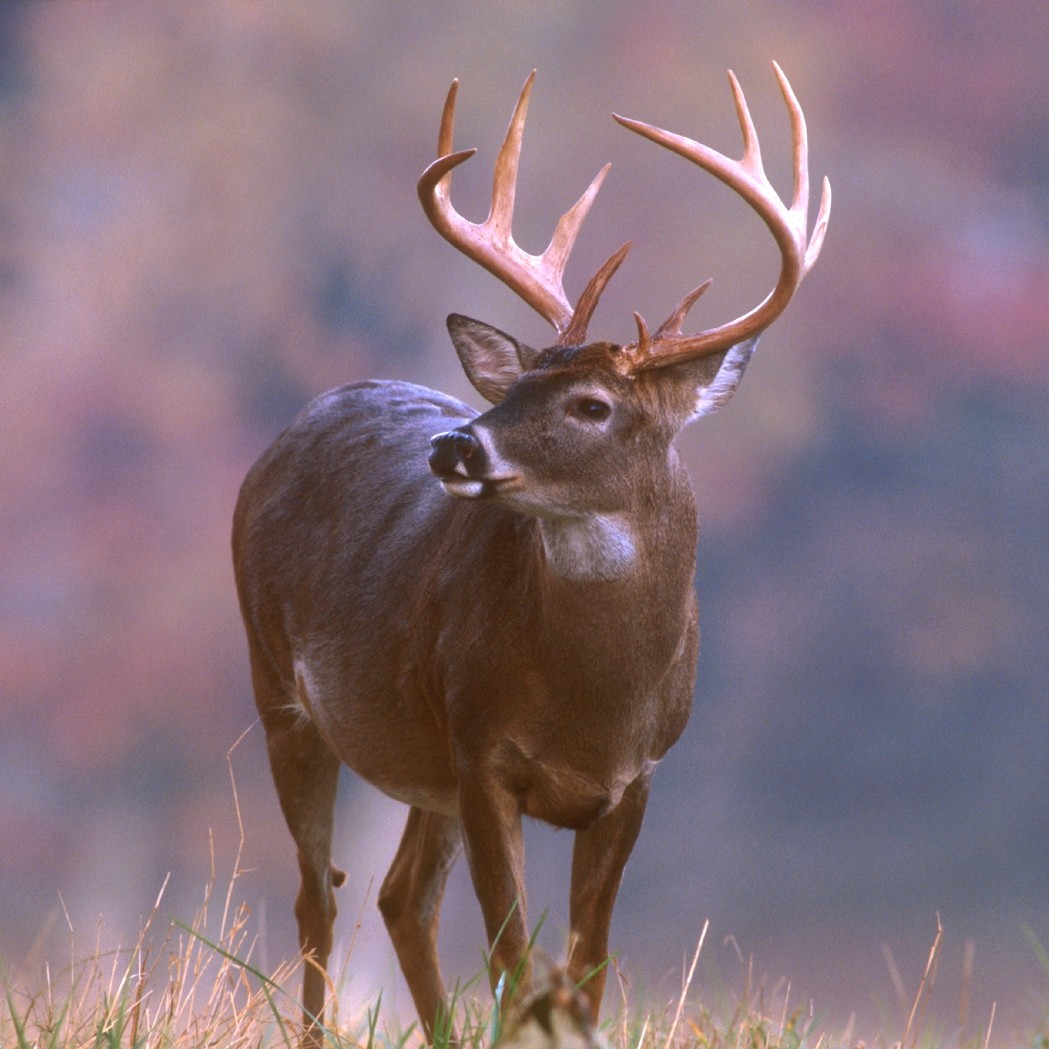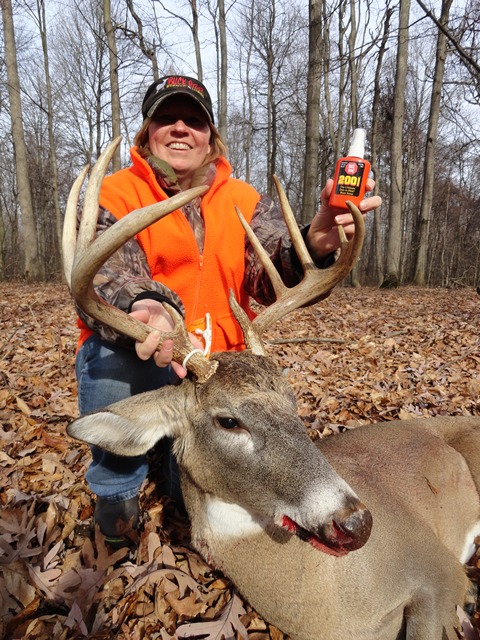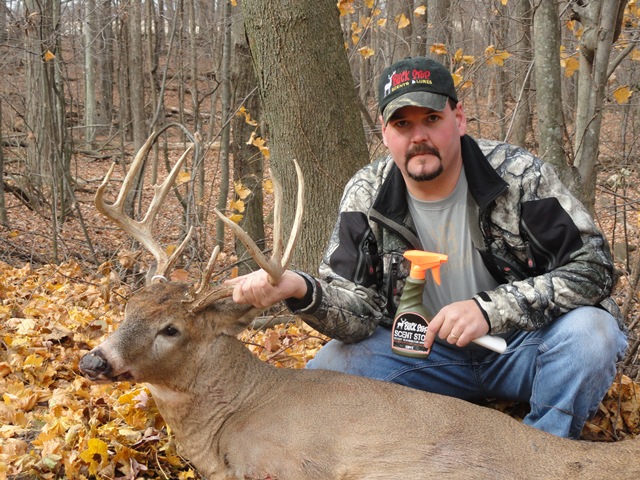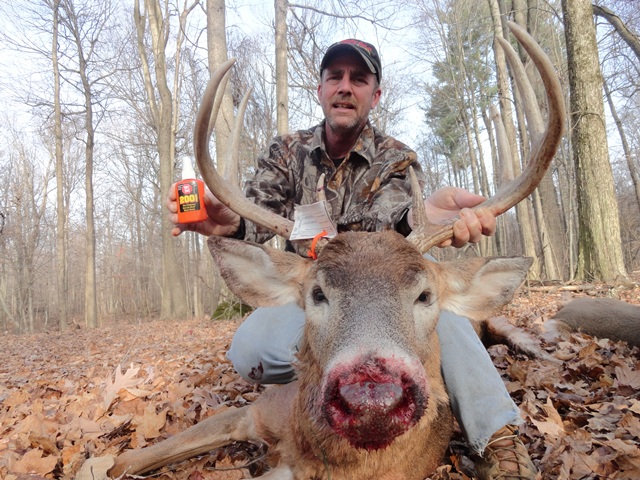Scent: How it carries
All of the deer's five senses are important to its survival, but by far the most important is its sense of smell. Deer's ability to smell is 100 times greater than humans. A deer will pick up scent that a human cannot even detect.
The whitetail, in particular, has few predators, man being his number one, and the species is very keen to our human odor. All the information and research done on wildlife has yet to establish the exact specific distinction of their sense of smell, yet we do know the species can determine not only the sex and breedability, but the age, size and diet of any given scent source. Their avoidance of certain areas and trails proves this. We can only further study the importance of natural products through nature study, not in chemical mixtures and scientific laboratories.
Deer are always monitoring the air for particles of scent. Many factors affect scent and how it travels. Most important are wind, temperature and moisture. A warm, moist, still atmosphere enhances a deer's ability to pick up scent molecules.
Both rain and falling snow carry the molecules of scent to the earth and dilutes them. Light mist and heavy fog block scent from carrying great distances. High humidity, between 50-70%, is ideal for scenting puposes and will make deer very nervous. Because more scent is carried to them, they become double alert.
Low humidity, between 10-20%, works against deer because the nasal passages have a tendency to dry out and it hampers their ability to pick up the scent molecules.
High temperatures cause air convection, and the rising thermals carry the scent molecules upward before they can reach a deer.
Extremely low temperatures also handicap a deer because the scent molecules are pushed downward.
Air movements play a big role in the deer's ability to use its sense of smell. Ideal scenting conditions mean a humidity of 20-80%, with temperatures of 40-60°F, coupled with breezes up to 5 MPH. Under these conditions, a deer will detect danger a half a mile or more away.
The Rut Cycle Explained
The shortened daylight hours of autumn trigger the animal's biological time clock. Thyroid, adrenal and testicular glands, which start the sex drive, are stimulated by the amount of sunlight that is absorbed through the eyes. As daylight hours decrease in the autumn, these glands release hormones into the animal's system. This causes the estrus cycle in females, and the testicles to lower and fill with semen in the male animal. Their neck also swells, antler growth stops and the velvet dries up in the male.
The male animal is ready to mate 3-4 weeks before most females come in-heat. That's why Bowhunters are so successful when using BUCK STOP's DOE-IN-HEAT® scent products like Peak, 200 Proof and Mate-Triks — before the estrus period begins.
Tips of Using Lures & Scents
A lure or scent, regardless of how well made, cannot be successful if used improperly. Generally speaking, Passion scents are used only during the "rut" period. Natural scents can be used at any time. Food lures work very well at all times, except during the "rut" period, when the buck's appetite drops off by about 50%. Curiosity lures can be used during any period.
Using Passion Scents
When within 20 yards of your stand, place 10-12 drops of scent on brush, tree trunk or Buck Stop's Scent Pad and circle your stand, re-applying same amounts of scent in all four directions. This method allows the scent to carry, regardless of wind direction. Next, walk to your stand and apply 10-12 drops to a nearby tree, brush or Buck Stop's Scent Pad, keeping scent at a level of 3 or 4 feet above the ground.
When sitting in a tree stand, do not place scent at sitting height level. Keep the scent where it can be detected without making the buck wary. In addition, you may want to use the very successful "SCRAPE" METHOD.
Find a scrape that is active. This will be a pawed-out, often muddy, smelly patch of ground about 2 feet square. It's usually located near a deer trail or run, almost always in a small clearing and beneath overhanging branches and twigs that will be horn-battered and chewed. Buck scrapes attract Does and that's what it's all about.
Sprinkle 10-12 drops of Peak or 200 Proof Doe-In-Heat® scent in the scrape. Put 10-12 drops on your scent pad and hunt down-wind from the scrape, preferably in a spot where you'll have a good open shot at the scrape.
Note: When sitting in a tree stand, do not place scent at sitting height level. Keep the scent where it can be detected without making the buck wary.
Using Natural Scents, Food Lures/Covers and Curiosity Scents:
Food lures and natural scents can be used at any time. Food lures do not tend to work very well during the rut, when a buck's appetite drops by 50%. Curiosity lures work great at this time.
For any of these lures or scents, rub a few drops on the soles of your boots upon leaving your vehicle, or, better yet, use the Buck Tracker Boot Pad. This will leave a natural scent trail as you walk to your stand. When sitting in a tree stand, do not place scent at sitting height level. Keep the scent where it can be detected without making the buck wary.



